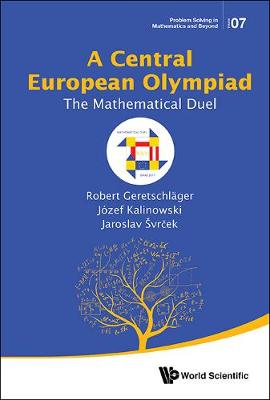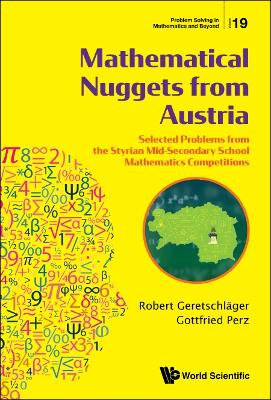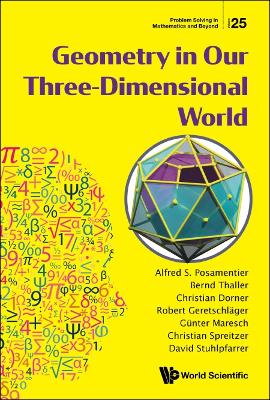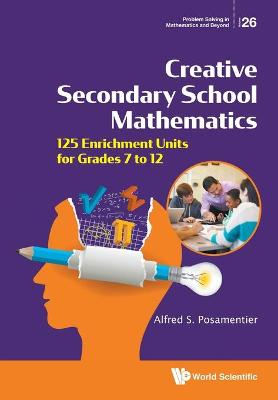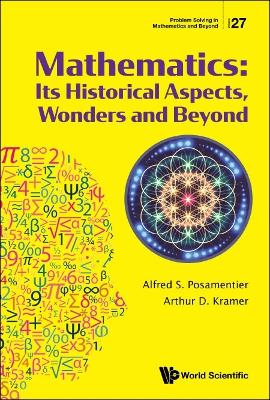Problem Solving in Mathematics and Beyond
5 primary works
Book 7
Central European Olympiad, A: The Mathematical Duel
by Robert Geretschlager, Jozef Kalinowski, and Jaroslav Svrcek
Published 17 January 2018
This book contains the most interesting problems from the first 24 years of the 'Mathematical Duel', an annual international mathematics competition between the students of four schools: the Gymnazium Mikulase Kopernika in Bilovec, Czech Republic, the Akademicki Zespol Szkol Ogolnoksztalcacych in Chorzow, Poland, the Bundesrealgymnasium Kepler in Graz, Austria and the Gymnazium Jakuba Skody in Prerov, Czech Republic.The problems are presented by topic, grouped under the headings Geometry, Combinatorics, Number Theory and Algebra, which is typical for olympiad-style competitions.Above all, it is of interest to students preparing for mathematics competitions as well as teachers looking for material to prepare their students, as well as mathematically interested enthusiasts from all walks of life looking for an intellectual challenge.
Book 19
This book is composed of the most interesting problems from a quarter century of regional mathematics competitions for students aged 11-14 in the province of Styria, Austria. The problems presented here range from pure puzzles to a more traditional mathematical type of question, but all are somehow special, posed with the intent of giving the reader something interesting to think about, with the promise of an entertaining moment of elucidation and enlightenment at the end.
Book 25
Geometry In Our Three-dimensional World
by Alfred S. Posamentier, Guenter Maresch, Bernd Thaller, Christian Spreitzer, Robert Geretschlager, David Stuhlpfarrer, and Christian Dorner
Published 16 December 2021
The book presents a comprehensive overview of various aspects of three-dimensional geometry that can be experienced on a daily basis. By covering the wide range of topics - from the psychology of spatial perception to the principles of 3D modelling and printing, from the invention of perspective by Renaissance artists to the art of Origami, from polyhedral shapes to the theory of knots, from patterns in space to the problem of optimal packing, and from the problems of cartography to the geometry of solar and lunar eclipses - this book provides deep insight into phenomena related to the geometry of space and exposes incredible nuances that can enrich our lives.The book is aimed at the general readership and provides more than 420 color illustrations that support the explanations and replace formal mathematical arguments with clear graphical representations.
Book 26
Creative Secondary School Mathematics: 125 Enrichment Units For Grades 7 To 12
by Alfred S. Posamentier
Published 16 June 2021
There are many topics within the scope of the secondary school mathematics curriculum that are clearly of a motivational sort, and because of lack of time they are usually not included in the teaching process. This book provides the teacher 125 individual units - ranging from grades 7 through 12 - that can be used to enhance the mathematics curriculum. Each unit presents a preassessment, instructional objectives, and a detailed description of the topic as well as teaching suggestions. Each unit has a post-assessment. This is the sort of instructional intervention that can make students love mathematics!
Book 27
Mathematics: Its Historical Aspects, Wonders And Beyond
by Arthur D. Kramer and Alfred S. Posamentier
Published 29 July 2022
Whenever the topic of mathematics is mentioned, people tend to indicate their weakness in the subject as a result of not having enjoyed its instruction during their school experience. Many students unfortunately do not have very positive experiences when learning mathematics, which can result from teachers who have a tendency 'to teach to the test'. This is truly unfortunate for several reasons. First, basic algebra and geometry, which are taken by almost all students, are not difficult subjects, and all students should be able to master them with the proper motivational instruction. Second, we live in a technical age, and being comfortable with basic mathematics can certainly help you deal with life's daily challenges. Other, less tangible reasons, are the pleasure one can experience from understanding the many intricacies of mathematics and its relation to the real world, experiencing the satisfaction of solving a mathematical problem, and discovering the intrinsic beauty and historical development of many mathematical expressions and relationships. These are some of the experiences that this book is designed to deliver to the reader.The book offers 101 mathematical gems, some of which may require a modicum of high school mathematics and others, just a desire to carefully apply oneself to the ideas. Many folks have spent years encountering mathematical terms, symbols, relationships and other esoteric expressions. Their origins and their meanings may never have been revealed, such as the symbols +, -, =, π. ꝏ, √, ∑, and many others. This book provides a delightful insight into the origin of mathematical symbols and popular theorems such as the Pythagorean Theorem and the Fibonacci Sequence, common mathematical mistakes and curiosities, intriguing number relationships, and some of the different mathematical procedures in various countries. The book uses a historical and cultural approach to the topics, which enhances the subject matter and greatly adds to its appeal. The mathematical material can, therefore, be more fully appreciated and understood by anyone who has a curiosity and interest in mathematics, especially if in their past experience they were expected to simply accept ideas and concepts without a clear understanding of their origins and meaning. It is hoped that this will cast a new and positive picture of mathematics and provide a more favorable impression of this most important subject and be a different experience than what many may have previously encountered. It is also our wish that some of the fascination and beauty of mathematics shines through in these presentations.
